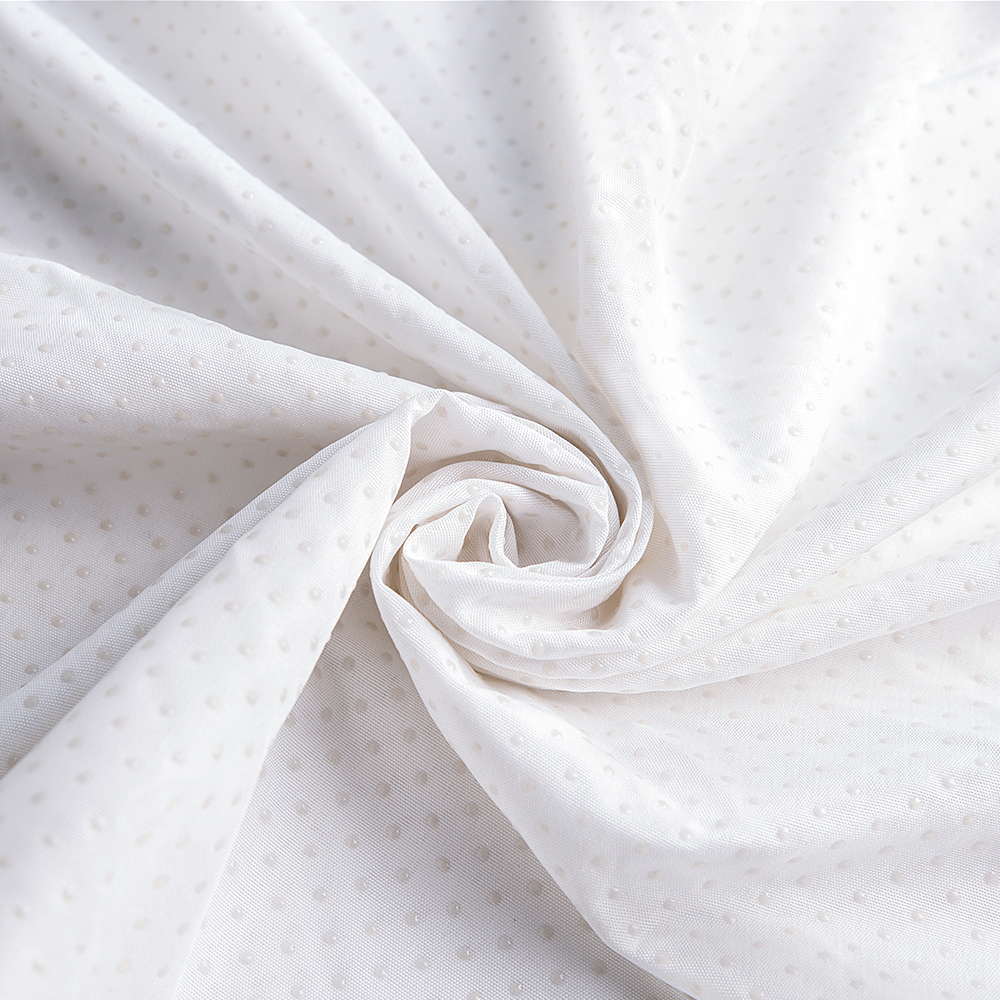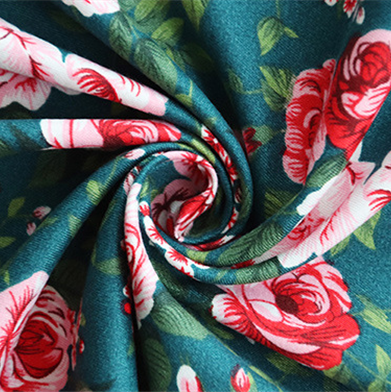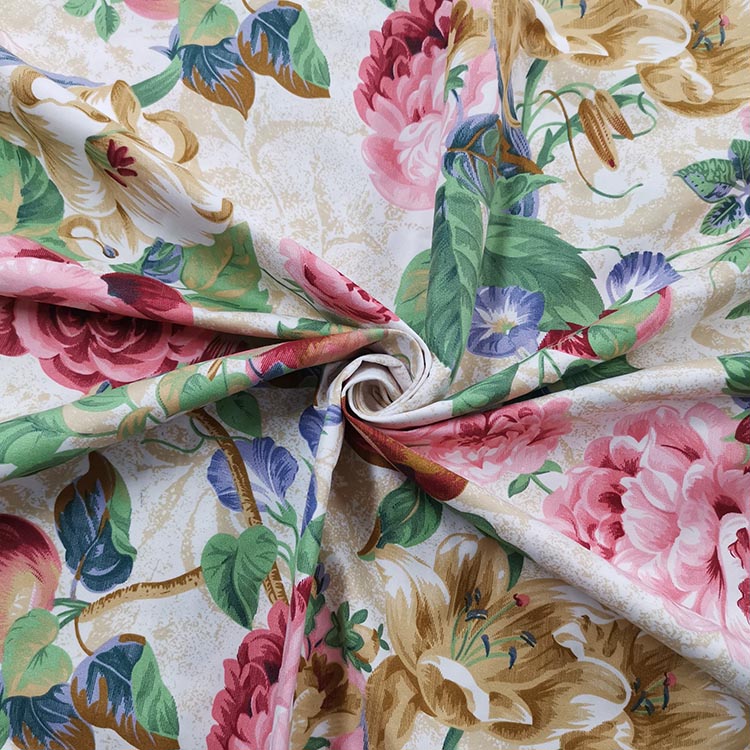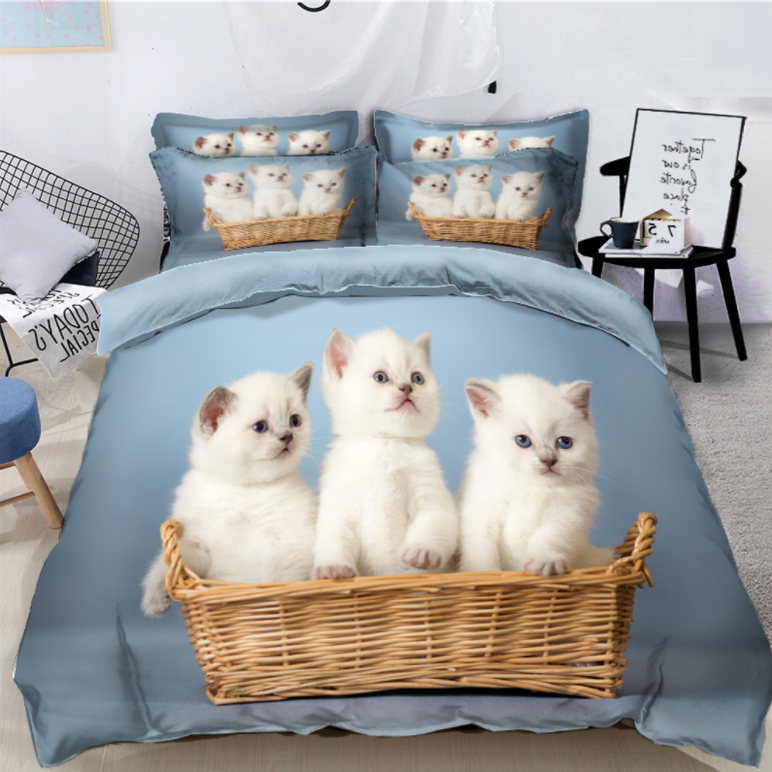Introduction: Understanding the durability of polyester disperse print fabrics
100% polyester disperse print fabric has become one of the most widely used textile materials across apparel, home furnishings, sportswear, and soft signage. Its growing popularity is closely linked to its durability, especially when compared with natural fibers or other printed synthetic fabrics. Durability includes resistance to fading, abrasion, pilling, stretching, shrinking, and washing degradation. This article explores the long-term performance of polyester disperse print fabric, explaining why it outperforms many other printed materials and how its printing method directly contributes to strength and color longevity.
How disperse dyes bond with polyester to enhance durability
The key advantage of 100% polyester disperse print fabric lies in the chemical relationship between polyester fibers and disperse dyes. During heat transfer or high-temperature direct printing, disperse dyes sublimate and diffuse into the polyester fiber. Instead of simply sitting on the surface, dyes penetrate deeply and become physically trapped within the fiber structure. This process creates exceptional colorfastness and long-lasting print performance. Unlike pigment prints that rely on binders or cotton prints that have weaker dye-fiber bonding, disperse-dyed polyester maintains its integrity even under heavy friction, sunlight exposure, and repeated laundering.
Why deep dye penetration matters
Deep penetration ensures the print does not easily rub off, crack, or fade. This makes disperse-printed polyester ideal for activewear, upholstery, promotional items, children’s clothing, and any products expected to endure frequent handling. The dye becomes one with the fiber rather than a coating, contributing significantly to durability.
Comparison with other commonly printed materials
Different fabrics use different dyeing or printing processes, and each performs differently under stress. Cotton, rayon, nylon, and polyester blends vary in strength, shrinkage, moisture absorption, and fading tendencies. The following comparison highlights how 100% polyester disperse print fabric performs relative to other materials in terms of abrasion resistance, colorfastness, and long-term stability.
| Material | Durability Level | Notable Characteristics |
| 100% Polyester (Disperse Print) | Very High | Excellent colorfastness, abrasion resistance, minimal shrinkage |
| Cotton (Reactive Print) | Moderate | Fades faster, prone to shrinkage, softer feel |
| Nylon (Acid Dye Print) | High | Good strength, but weaker UV stability compared to polyester |
| Polyester/Cotton Blend | Moderate to High | Durable but printed areas may not match pure polyester performance |
Resistance to fading and UV exposure
One of the biggest durability advantages of disperse-printed polyester is its superb UV resistance. Polyester fibers naturally resist UV degradation better than nylon or cotton, and disperse dyes maintain color intensity even under prolonged sunlight. This makes the material particularly suitable for curtains, outdoor cushions, flags, soft signage, and sportswear frequently exposed to outdoor conditions. Cotton and rayon prints tend to fade significantly faster, especially in bright environments or after repeated washing.
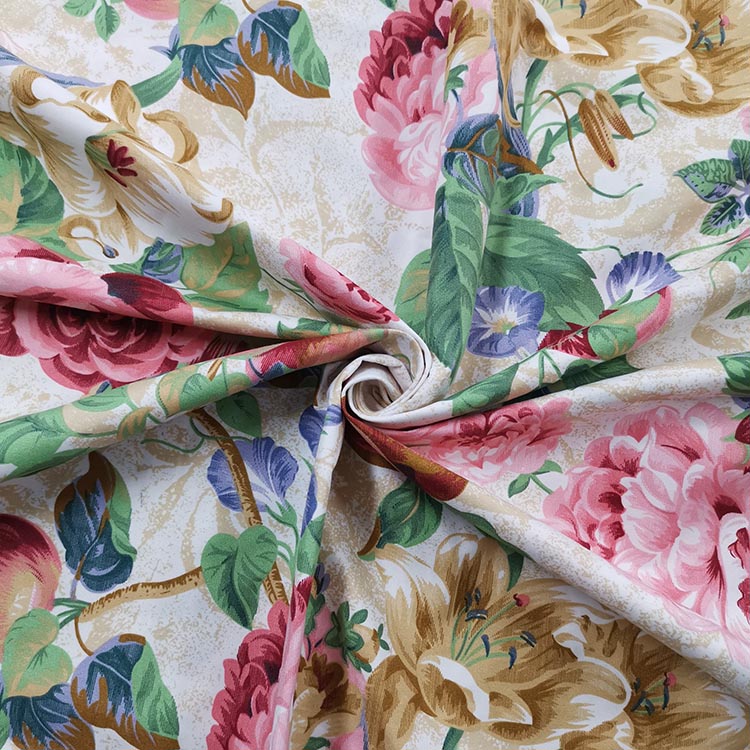
Applications that benefit from UV resistance
- Outdoor banners and promotional flags
- Patio textiles and garden cushions
- Sportswear designed for outdoor activities
- Window curtains in sunny environments
Abrasion resistance and long-term wear
Polyester is known for its exceptional abrasion resistance, allowing disperse-printed fabrics to maintain structural integrity even with heavy usage. This is important in upholstery, seat covers, and children’s products where constant friction is expected. Cotton tends to wear out faster in seat cushions or high-use apparel due to fiber breakage. Polyester's synthetic structure resists friction damage, meaning prints remain crisp and fabric does not thin out rapidly.
Why polyester lasts longer under friction
The molecular structure of polyester gives it high tensile strength and the ability to resist deformation. Since disperse dyes penetrate the fiber itself, friction does not scrape off color, unlike pigment-printed materials where the pigment layer may crack or peel over time.
Washing performance and resistance to shrinkage
100% polyester disperse print fabric excels in wash durability. It does not shrink like cotton or wrinkle like rayon, and the prints maintain their vibrancy even after dozens of washing cycles. This makes it ideal for garments that require frequent laundering, such as uniforms, sports apparel, bed sheets, curtains, and children’s clothing. Polyester also dries faster, reducing the risk of mold or odor buildup.
Laundry-related advantages
- Minimal shrinkage compared to cotton
- Maintains print clarity even in hot water
- Quick drying improves hygiene and convenience
- Wrinkle resistance reduces the need for ironing
Pilling resistance and fabric stability
Pilling occurs when loose fibers migrate to the surface and form small balls. Polyester disperse print fabric is significantly more resistant to pilling compared to rayon, acrylic, or cotton blends. This is because polyester fibers are strong, smooth, and less likely to break. Even after heavy use, disperse-printed polyester maintains a clean, smooth surface, keeping garments and textile products looking new much longer.
Environmental conditions where polyester excels
Polyester disperse print fabric performs well in humid, hot, or outdoor environments. It resists mildew better than cotton and retains shape better than rayon. Whether used in tropical climates, sportswear, or moisture-prone interiors, polyester maintains performance where other fabrics degrade quickly.
Conclusion: A top-performing material for durability
When compared to cotton, rayon, nylon, blends, and pigment-printed fabrics, 100% polyester disperse print fabric consistently ranks among the most durable textile choices. Its exceptional colorfastness, abrasion resistance, UV stability, shrink resistance, and superior wash performance make it suitable for both high-use apparel and long-lasting home textiles. For manufacturers and consumers seeking high durability and stable print quality, disperse-printed polyester remains one of the best-performing materials available.





 English
English
 中文简体
中文简体



